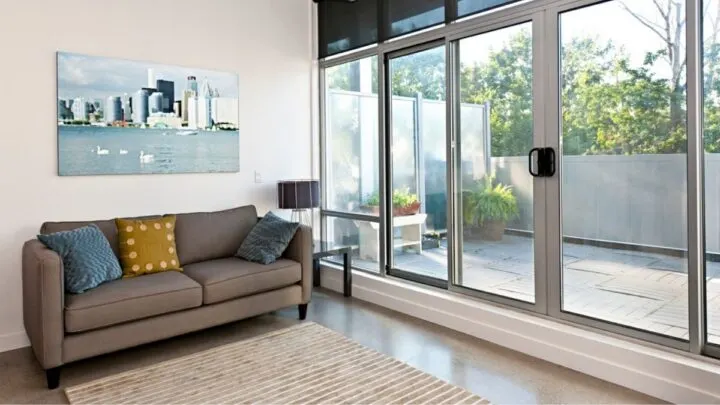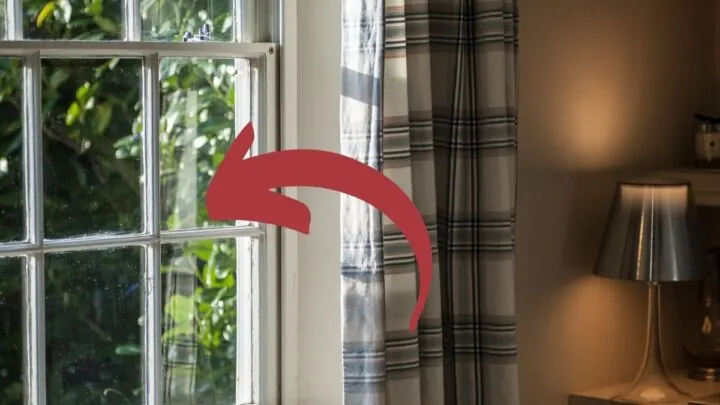When prepping a home for sale, one of several things buyers and real estate experts look at is the windows and living room window sizing.
Choosing windows, whether you’re remodeling or constructing a new house, is among the most important decisions you’ll make.
Windows have to be efficient, aesthetically beautiful, and most significantly, need to match the room. When you’re buying windows for your home, it’s important to measure the size of each window before purchasing them. The manufacturer will always take off a ½ inch from both height and width ranges in order to make sure they are installed successfully!
The process of rebuilding or putting in a new window might be a little stressful because there is so much to consider.
To make things a little easier for you, we’ve included the standard sizes for the various types of windows.
Keep reading if you’re in the midst of remodeling or building a new house.
We conducted in-depth research to help you select the right window size for your living room.
Standard Window Sizes
There are a few standard window sizes that are used in homes and office buildings.
The most common window sizes are 24″ x 36″, 30″ x 54″, and 36″ x 60″.
These windows are typically made of a single pane of glass, with a frame around the perimeter.
Other standard window sizes include 48″ x 72″, 60″ x 84″, and 72″ x 96″.
These windows are usually made of two or more panes of glass, with a frame around the perimeter.
The size of a window may be dictated by the size of the opening in the wall or by the amount of light and ventilation that is desired.
Let’s look at different types of standard windows:
Double-Hung and Single-Hung Window
There are a few standard sizes for double-hung and single-hung windows, which are based on the width of the window opening.
For double-hung windows, the most common size is 36 inches by 60 inches, although other sizes such as 48 inches by 60 inches are also available.
For single-hung windows, the most common size is 30 inches by 54 inches, although other sizes such as 36 inches by 54 inches are also available.

Sliding Window
There are a few standard sizes for sliding windows, which are based on the width of the window opening.
The most common widths for sliding windows are 24 inches, 30 inches, and 36 inches.
However, other sizes may also be available, depending on the manufacturer.
The height of the window will vary depending on the style of the window, but the most common heights for sliding windows are 48 inches and 60 inches.
Again, other sizes may be available depending on the manufacturer.
When measuring a sliding window, it is important to measure the width of the opening first.
The width will determine the size of the window, so it is important to get an accurate measurement.
Picture/Fixed Window
There are various picture and fixed window sizes available on the market today.
When choosing a size for your home, it is essential to consider the dimensions of the space you have available and the specific needs of your family.
Picture and fixed windows come in a range of standard sizes, making it easy to find one that will fit your needs.
The most common picture and fixed window sizes are:
- 24″ x 36″ – This size is typically used for small bedrooms or bathrooms.
- 30″ x 36″ – This size is often used for more oversized bedrooms or living spaces.
- 36″ x 48″ – This size is typically used for dining rooms or large living spaces.
- 48″ x 60″ – This size is often used for great rooms or large living spaces.
- 60″ x 84″ – This size is typically used for sunrooms or large living spaces.
Picture and fixed windows can also be custom-made to fit your specific needs.
If you have a unique space in your home, talk to a window specialist about custom sizes.
Casement Window
There are a few different factors that will affect the size of your casement window, including the style of the window and the specific measurements of your home.
However, there are some general casement window sizes that are used most often.
The average casement window width is between 24 and 36 inches, with the height being slightly less at 22 to 34 inches.
Of course, these dimensions can vary depending on the overall size of your home and the other windows in the space.
If you have a smaller opening, you may want to consider awning windows or fixed windows instead.
When it comes to choosing the right size for your casement windows, it’s important to keep in mind both the function and aesthetic of the window.
Custom Window Sizes
One of the great things about custom windows is that you can choose any size you want.
This means that you can make them as small or as large as you need, which is great for a variety of purposes.
For example, if you need a small window for a bathroom, you can get one made to fit perfectly.
Or, if you want a large window for a living room, you can have that made too. There are no limits.
Another great thing about custom windows is that they can be made to any shape you want.
So, if you have an oddly shaped window or one that is an unusual size, you can still get a custom window made to fit it perfectly.
This flexibility is what makes custom windows so popular among homeowners.
No matter what your needs are, you can find a custom window that will meet them perfectly.
Summing Up Living Room Window Sizing
There are many different types of living room window sizes, and these can vary depending on what size room you have, along with what type of window you want. You can install single-hung or double-hung windows, casement windows, sliding windows, or even custom windows if you need a specific size.
The possibilities are endless! Just make sure you consult a professional and always measure multiple times so you make sure you get the windows you want.


